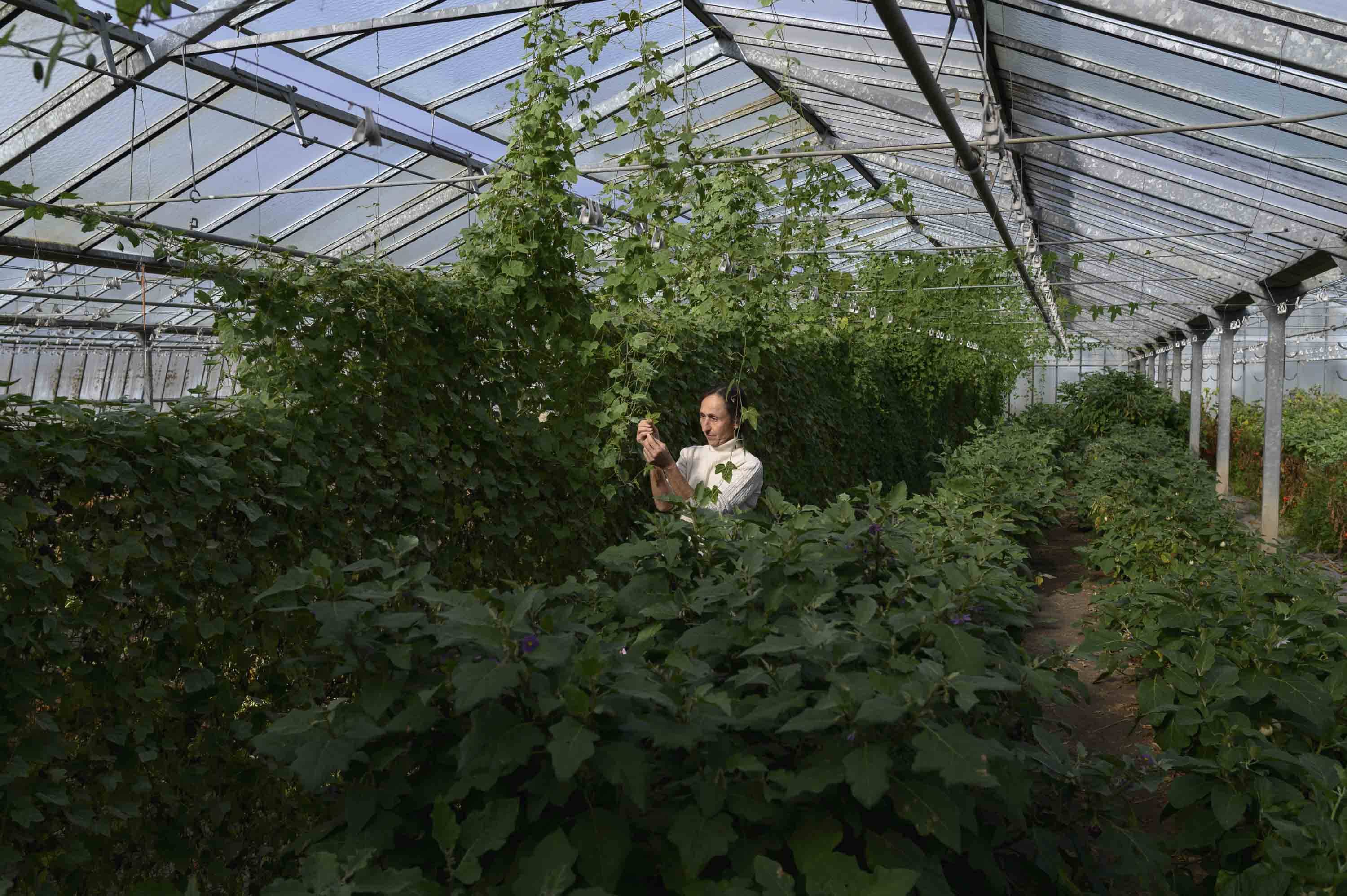The Starter before the Starters
FOTOS: Philipp Horak
TEXT: Achim Schneyder
ARTICLE PUBLISHED
S MAGAZIN | ISSUE 1
ORDER S MAGAZIN
The Steirereck’s bread basket is a trolley. Steering the trolley is Andreas Djordjevic, better known as Brot-Andi.
FOTOS: Philipp Horak
TEXT: Achim Schneyder
ARTICLE PUBLISHED
S MAGAZIN | ISSUE 1
ORDER S MAGAZIN
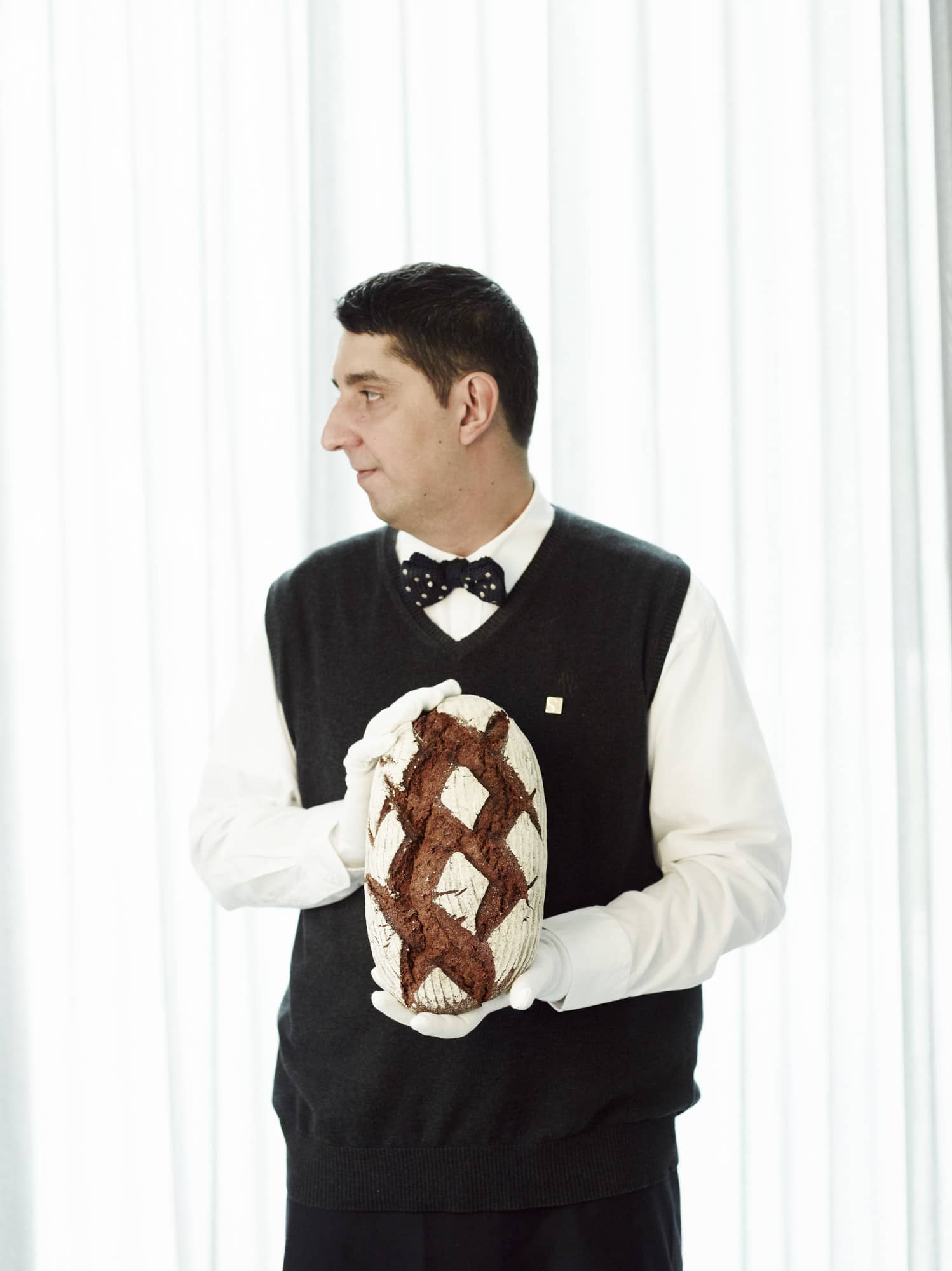
At the old Steirereck, the Steirereck in the Rasumovskygasse, there was something that wasn’t there at the new Steirereck, the one in the Stadtpark: the bread trolley. It was like the bread basket but on wheels. That’s just on the side, for those of us who can still remember the legendary advertisements for bread and other baked goods that featured the basket. The restaurant moved to its new culinary location by the banks of the river Wien in January 2005, and many of the guests who loyally followed soon wanted the trolley to be wheeled out of retirement in a dusty garage and brought back onto the culinary boulevard.
One day Birgit and Heinz Reitbauer felt they could no longer resist, and so the lady of the house began to search for a suitable driver. She approached the food runner Andreas Djordjevic, then still “rather shy”, as he puts it, and made him an offer. “The boss asked me if I wanted to take on the bread trolley for a few weeks once it had been brought back,” recalls the 33-year-old with Serbian roots. “So I thought, be brave and give it a go.”
The probationary few weeks have turned into almost 13 years of duty, and the shy food runner of the past has become something of an institution, standing proud, with a self-confident, genuine but never intrusive manner. His colleagues respectfully refer to him as the bread sommelier, due to his extensive knowledge, and many regulars fondly call him Brot-Andi. With a twinkle in his eye he refers to himself as the “trained cutup” who rolls through the restaurant with the stuff that comes before the starter.
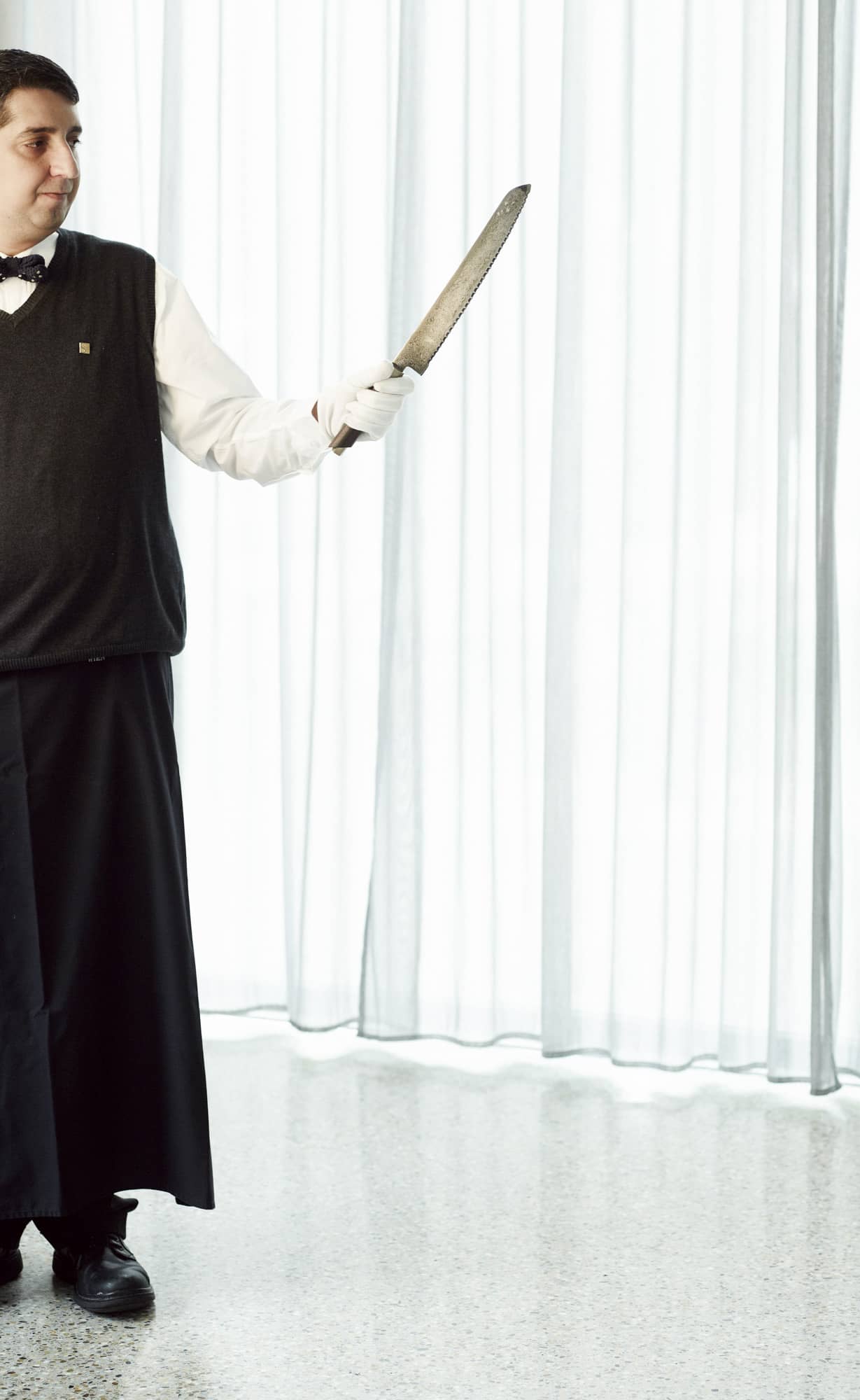

This cutup now shows off his bread both at lunchtime and in the evening. At midday it’s about 20 different varieties, in the evening it’s a bit more, sometimes up to 25. Four kinds are made in-house: the incredibly juicy black-pudding bread, huge lye pretzels, gluten-free potato bread with chives and sour cream, and white bread with lavender. The lavender used here grows in the herb garden on the roof of the Steirereck. The rest comes from currently seven different, more or less independent bakeries in and around Vienna.
Nothing enters the house that hasn’t been previously inspected, tasted, assessed and eventually considered as good. “I know all our bakers’ kitchens on a personal level, if you like. I need to see how a place operates, I want to know where the ingredients and products come from, and how they’re made,” says Brot-Andi. He is proud that over the years, his floury fact-finding missions have led him to making some great discoveries. “Initially it was the case that we bought many of our breads from bakeries that also supplied other restaurants. However, we weren’t always pleased with the quality.” So Andi went on a search and found more and more small businesses who produced the kind of bread that went down well at the Steirereck. Today Joseph Brot is the only supplier with a comparably well-known name. All the others are effectively insider tips and passed-on secrets, such as Denise Pölzelbauer in Bad Erlach, Schweighofer-Steiner in Tulln, or the Reiter bakery in Korneuburg.
“When it comes to bread,” Andi says, “it all depends on the smell, the crust and the fluffiness. The press test is also important. When you press into the crumb its shouldn’t give way too much.”
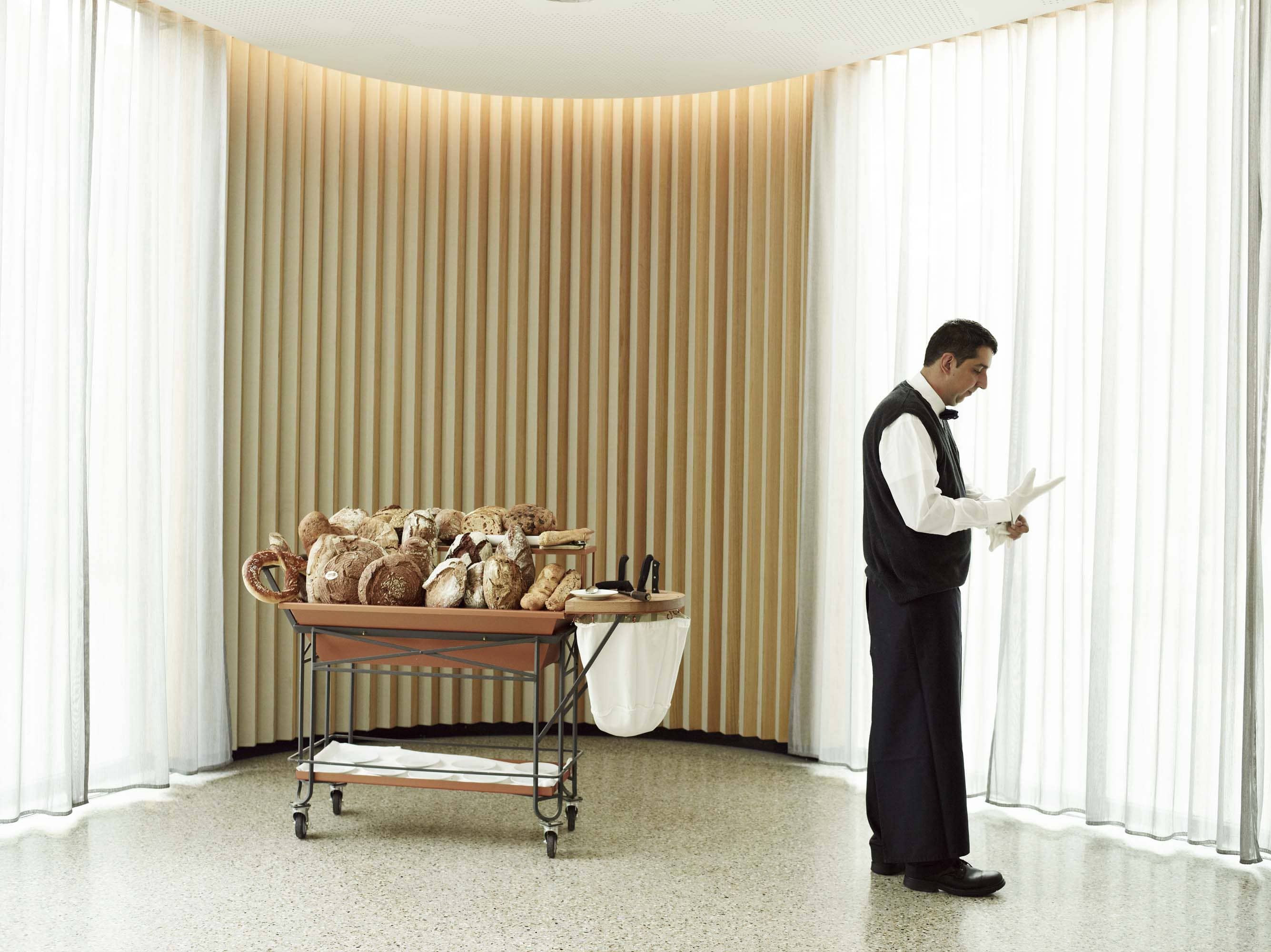
Of course, the choice of knives matters just as much. “I use five different ones,” Andi explains, although in fact he always has six knives on his bread trolley. However, one of these is more or less for decoration. It’s the precious bread knife from the Austrian enterprise Blades of the Gods based in Bali. “I could use that one too, of course, but this knife requires a lot of care afterwards. So I usually do without this gem and just have it with me for show.”
The knife that Brot-Andi bought years ago for three Euros at a discount shop is no gem, but he can not do without it. “This has turned out to be a godsend for every type of ciabatta, which isn’t easy to slice, because a good ciabatta is crisp on the outside but very soft inside. You always run the risk of squashing the bread or tearing it up. But not with this knife, with this knife the bread cuts like soft butter.” Both the black-pudding bread and the gluten-free bread have their own dedicated knife. “Because with the black-pudding bread it usually turns out a bit of a mess. And of course the gluten-free one mustn’t be contaminated.” If that weren’t enough, there is also one model for very fine slicing and one for coarser cuts.
Bread knives are filling up the kitchen drawers in Andreas’ home. “At one point I started to collect them. By now I own about 30, and – to the despair of my wife – there is no end in sight. But when you look at it like this, in a way bread defines my life.”
When it comes to bread, it all depends on the smell, the crust and the fluffiness. The press test is also important. When you press into the crumb its shouldn’t give way too much.
Andreas Djordjevic
Whether at home or at work, before Brot-Andi slices into a loaf of dark bread he carves three little crosses into the loaf’s underside with the tip of his knife. That puzzles some guests, who may well also ask him why. Others however are familiar with this custom and appreciate it. “I haven’t seen that for such a long time…” is a sentence Andres Djordjevic hears quite often.
“I’m blessing the bread,” he explains. It’s a ritual that he learned from his grandmother and that has been a matter of course to him for as long as he has been able to think. It also only applies to dark bread – at least in Austria. “In Serbia, my father’s homeland, white bread is blessed, too.”
When it comes to the daily dealings with guests, there are different approaches and different types. “Some guests are curious and want to be told everything. They like to talk to me about the bread. Others prefer a straightforward service, point to the bread they want, and then I’m gone again, so to speak,” is how Andreas describes his day. “Often I can already sense as I approach what’s coming next.” It’s what you call experience or insight into human nature.
For Andi, a particularly important part of his work is the fact that nothing, but absolutely nothing, must go to waste. Any left-over white bread is turned into crumbs for cooking, and black bread into croutons, for example. “To tell the truth, we have a pretty good handle on it all, in that we can estimate precisely how much we need every day.”
The bread that is not finished by the guests and may even come back half-eaten is also not thrown away. Instead it is collected and delivered to Styria, to the Steirereck on the Pogusch, where it is fed to the sheep and the pigs. “That completes the circle,” Brot-Andi says. “It’s good and right that way.”
Stories
Stories of people driven by love and passion for their craft.
The articles can be found in the current 'S Magazine'. Every four months you can find new stories here.
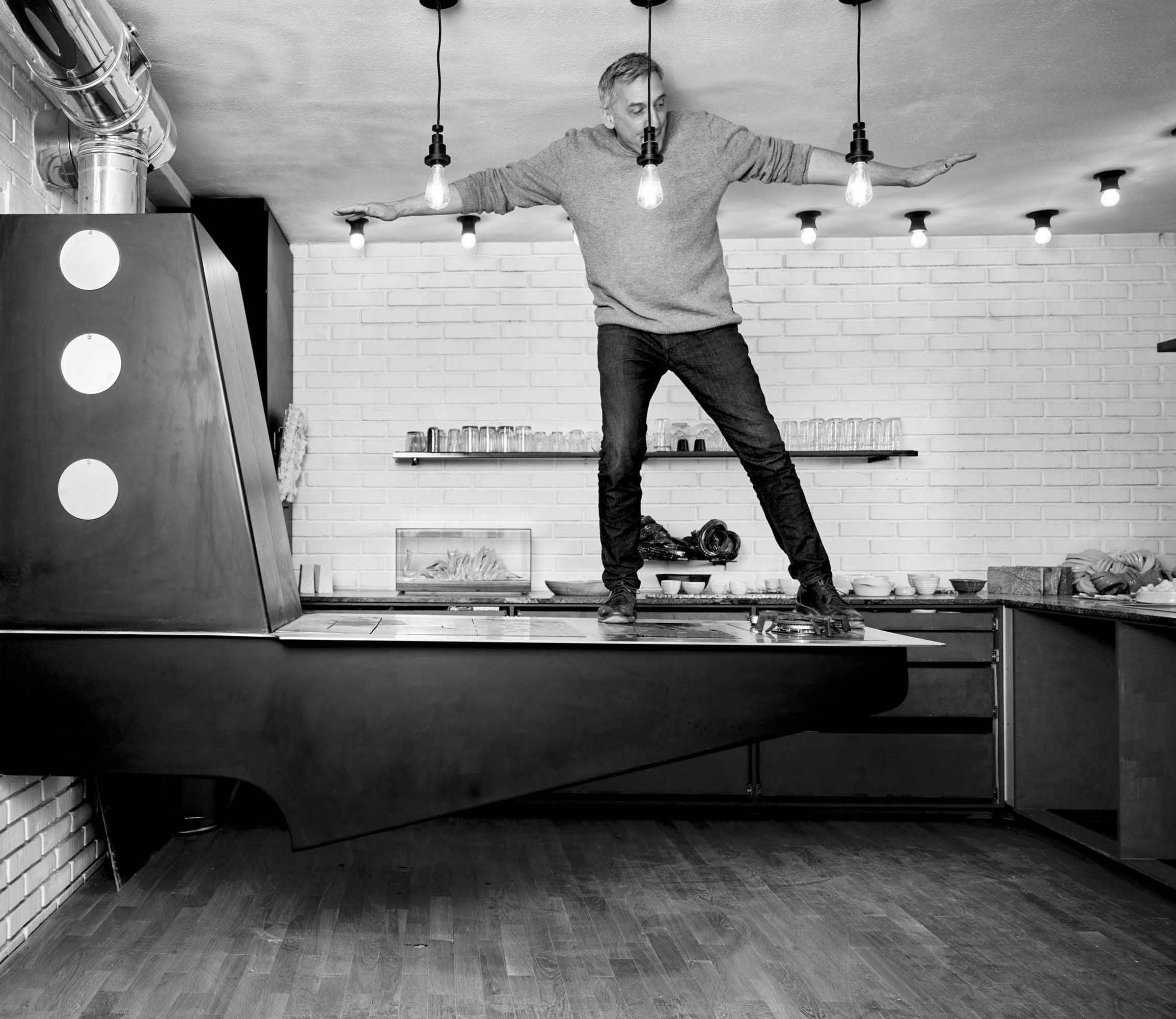
ISSUE 14
The Man who gets all hot for fire
